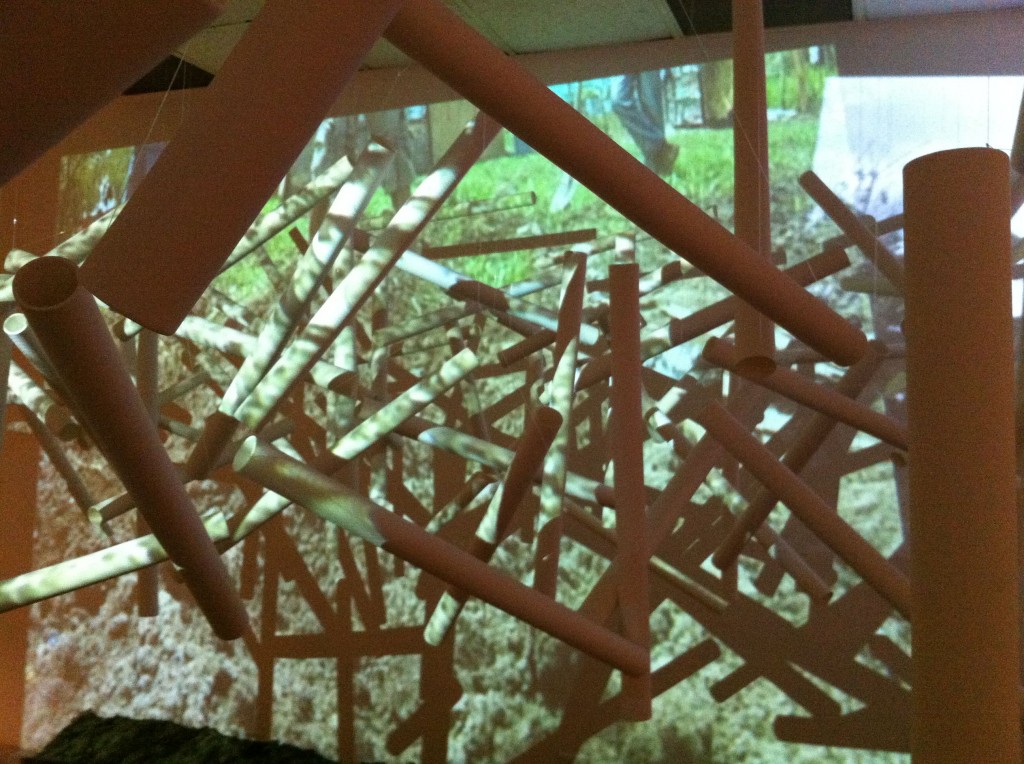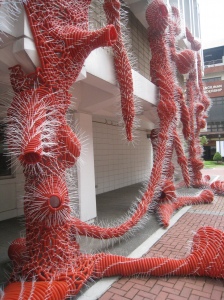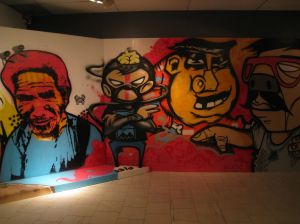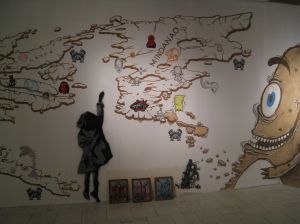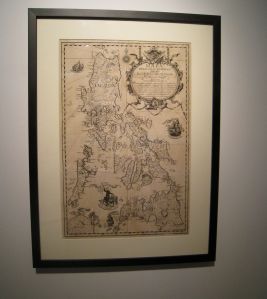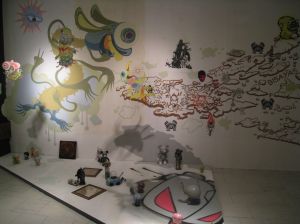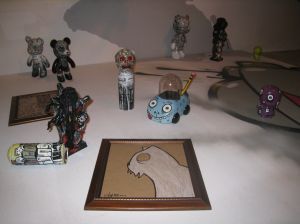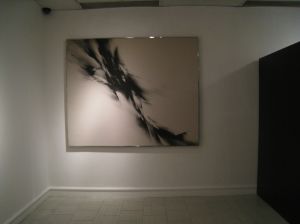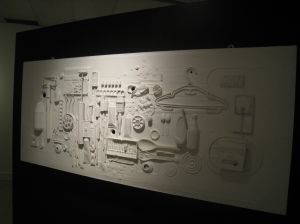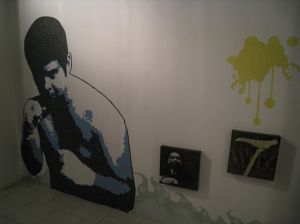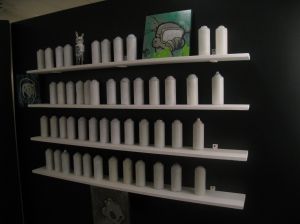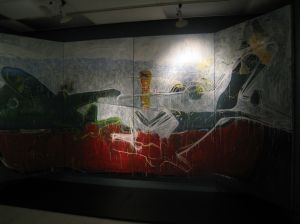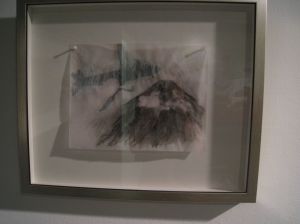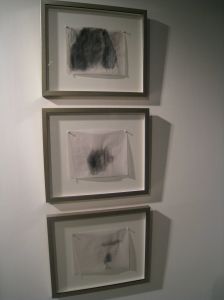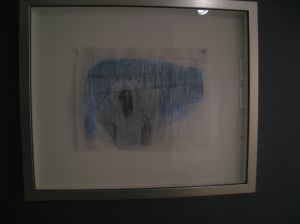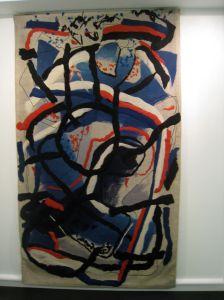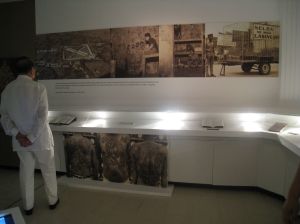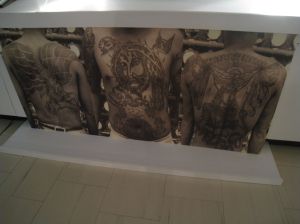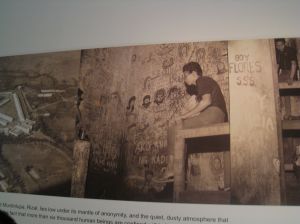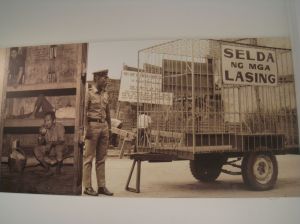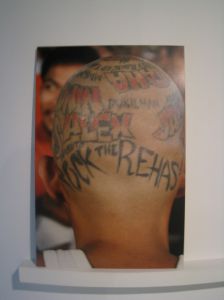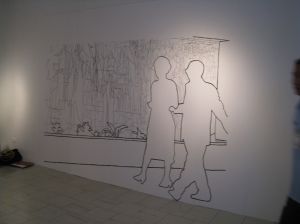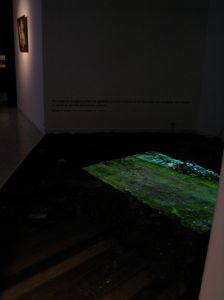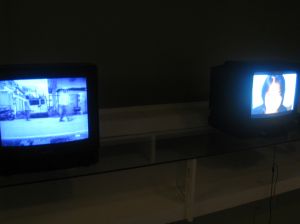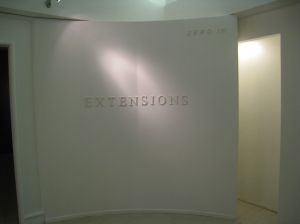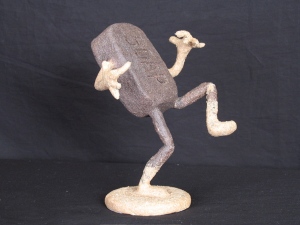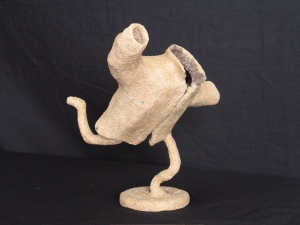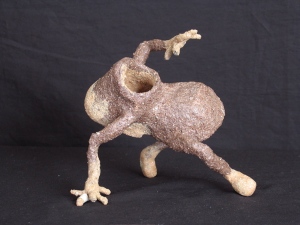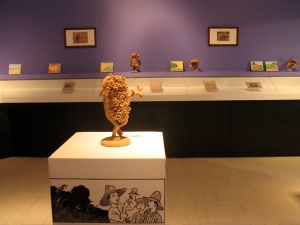The word beat connotes either the pulsating rhythm of a musical piece or the exhaustion resulting from defeat. The first definition puts us in mind of a fun-filled frenzy while the second brings on images of imminent collapse. The contrasting styles of Ernest Concepcion and Nikki Luna parallel this duality. Yet, as this exhibit at the Lopez Museum shows, when deftly handled, Ernest’s humorous illustrations and Nikki’s pleas for the oppressed can both make for one powerful show. Continue reading
Tag Archives: Lopez Museum
My Favorite Piece from 2010, The Year The Museums Showed Us How
We saw some pretty good stuff in 2010, the year that just seemed to whiz by. I thought the museums led the way, bringing us well-mounted exhibits that made art watching both exciting and gratifying. The Vargas Museum started their 2010 exhibit line-up in February with Stock, a show of works by Alfredo and Isabel Aquilizan, then had Bound and Bomba in June, and ended the year with Rodel Tapaya’s Bulaklak ng Dila. The Yuchengco Museum gave us Santi Bose’s retrospective, Remix, in February, and combined art and design with Pumapapel, an exhibit of works on paper, in July. The Lopez Museum culminated their 50th Anniversary in November by inviting street artists to show their stuff for Extensions. Meanwhile, the Ateneo Art Gallery celebrated their own 50th by inaugurating their brand new space in October with the super Lee Aguinaldo retrospective. Continue reading
Extensions and More at the Lopez Museum
What do you get when the Lopez Memorial Museum allows two collectives, one hip artist, and a group that works with prison
inmates to rifle through its archives and art collection? One of the best exhibits I’ve seen this year! (And I think I’ve seen quite a bit.)
The curatorial team of the Lopez Museum have always been great at weaving the current into their treasure of trove of Filipino masterpieces. Eileen Legaspi-Ramirez and Chit Ramirez manage to inject their exhibits with the unexpected, coming up with an inspired mix of artists that have yet to deliver anything boring. Two years ago, they actually made Amorsolo fun. Kiri Dalena’s piece for Keeping the Faith (in 2008) also sticks out in my memory. It captured a turbulent period in Philippine history in an accessible manner, without detracting from its
seriousness. And now, they’ve done it again.
Extensions reiterates that a venerable institution need not get caught in a time warp. It can find novel ways to interact with a contemporary audience. Pilipinas Street Plan is made up of a core group of ten artists who believe in creating ephemeral public art. In other words, graffiti. They have made their
mark in several locales around the country, adopting nom de guerres to conceal their true identities. By day, we know them as practicing visual artists whose works grace Manila’s galleries. After, they transform into street artists. The acceptance of graffiti as art is, of course, nothing new. Street artists all over the world have been legitimized into the mainstream by an accepting public. Witness how the most famous of them all, Banksy, has achieved
record auction prices for his pieces. City councils now consider his works as cultural landmarks. Perhaps having the group work on the Lopez Museum sanitizes the whole concept of graffiti as subversive, as art that appears in unexpected venues. Still, when the walls of a museum fill up with spray painted graphics juxtaposed against an 18th century map of the Philippines, a painting by Fernando Zobel, and a mixed media assemblage by National Artist J. Elizalde Navarro, you can’t help but relish the experience.
The murals started out as a response to Pedro Murillo Velarde’s Mapa delas yslas Philippinas from 1734. The street artists rendered their own version of the country’s map, using stickers to mark the sites where their works can
be found. Lightboxes and small framed pieces add detail to the painted walls. They also laid out their own versions of vinyl toys —duly graffiti-ed— on the floor. During the exhibit’s opening, cans of spray paint stood on a makeshift shelf, an encouragement to guests to add their
own piece of art to what had already been done.
In another area of the museum, another collective exhibited its work. Instead of reacting to a piece in the museum’s collection, Plataporma chose to respond to the geographic history of the
museum itself. For now/here, they play video recordings of random interviews about the Lopez Museum conducted within a 1 kilometer radius of the past, present, and future museum sites. By the entrance to their exhibit space, the artists recreated a Manansala mural that had been demolished when the old museum in Pasay was torn down. To enter into their space, one crosses a short wooden bridge. This symbolizes the transition from the “old” museum to its current site. The bridge crosses over a stylized excavation site filled with mud that had actually been transported from the museum’s original location.
Maya Muñoz takes over the first gallery, across the reception desk at the main entrance. The museum uses this space to house works that transit from different locations. Maya herself is an artist who works in two locales: Manila and Bicol. Her painting, Coming and Going, deals with
exile and home. She started this piece after she had done a series of drawings that depicted either Ninoy Aquino on the tarmac or a triumphant Manny Pacquiao, two hometown heroes who have had to leave home to achieve glory. Her massive quadriptych (its four panels measure a total of about eight feet by 16 feet) started out as a self-portrait which evolved into a painting of planes. The piece echoes the journeys inherent to the life of a person who commutes between two places she calls home.
Loob at Labas, from Rock Ed Philippines, completes the exhibition. Their volunteers have undertaken Rock The Rehas to use art, specifically creative writing, to give inmates at the National Penitentiary in
Muntinglupa access to new experiences. Photos of the New Bilibid Prison taken from the Lopez Museum archives, crafts created by the prisoners, and objects taken from within the prison add even more power to a video that runs images of the prisoners’ written work.
Extensions runs from 11 November 2010 to 20 April 2011 at the Lopez Memorial Museum, Ground Floor, Benpres Building, Exchange Road cor. Meralco Avenue, Ortigas Center, Pasig. Phone (632) 631-2417 or visit http://www.lopez-museum.org
Amorsolo-lite
Four months, seven museums, one book, one gala— whew! One big tribute to the first Filipino National Artist, Fernando Amorsolo. Manila has never seen such a comprehensive retrospective before. Amidst all the women, and rice rituals, and portraits, and landscapes with Philippine light shining ever so bright, the smallest exhibit looms largest in my memory: Tell-tale: the Artist as Storyteller, Amorsolo as Co-author at the Lopez Memorial Museum.
Perhaps it is the space that encourages this feeling of intimacy with Amorsolo the illustrator. Or perhaps the works themselves work their charm on the viewer, revealing a casual, sometimes irreverent, side to the legendary man. True to form, the museum’s curatorial team inject
elements of contemporary art into this body of early 20th century drawings, water colors, and ink wash pieces via Ikoy Ricio’s sawdust sculpture and small paintings. Ikoy’s work, interspersed alongside the original Amorsolo pieces from which he derives them, contribute to the
delight, whimsically bringing to life Amorsolo’s illustrations: the dancing pillow, the sprinting coat, the dangling monkey. Another appealing touch: actual reproductions of the books where Amorsolo’s illustrations appeared. Faithful down to the color of paper used, these interactive components literally put a handle on how it feels to appreciate the maestro.
Tell-tale: the Artist as Storyteller, Amorsolo as Co-author is at the Lopez Memorial Museum until 4 April 2009. For more about the Lopez Musuem, check out www.lopezmuseum.org.ph. For more about His Art Our Heart Amorsolo Retrospective, log on to www.amorsoloretro.com

